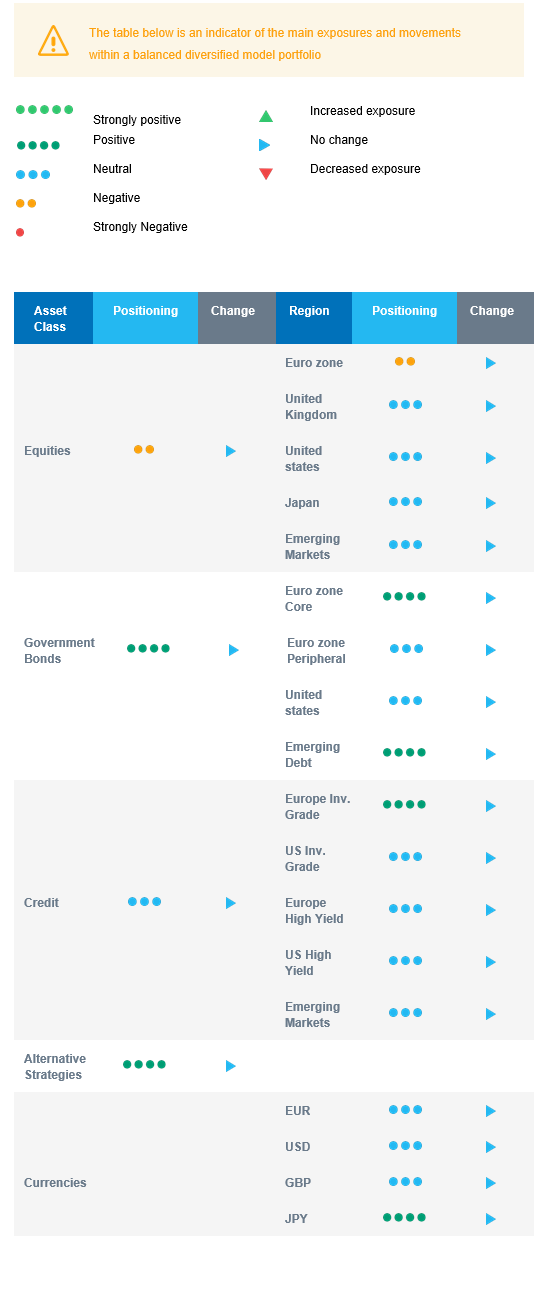Last week in a nutshell
- Cooling inflation in the euro zone allowed ECB President Christine Lagarde to provide a nuanced outlook on growth, wage pressures and inflation targets.
- In the US, market expectations were met as the Personal Consumption Expenditure price index (excluding food and energy costs) rose 2.8% YoY, the slowest pace since March 2021.
- The Lunar New Year holiday boosted China's services sector, while manufacturing activity remained subdued.
- India's Q4 2023 GDP growth exceeded expectations at 8.4% YoY, with investment growth significantly outpacing consumption growth.
What’s next?
- Central banks will be in the spotlight as the ECB and the Bank of Canada are expected to keep rates unchanged while Jerome Powell’s testimonies to Congress and the US Fed’s Beige Book will offer a snapshot of economic developments.
- In the US, the “Super Tuesday”, traditionally the most significant day in the primary calendar, will allocate over one-third of the total delegates for both Republican and Democratic presidential primaries.
- In Beijing, the Chinese National People's Congress will convene. Investors will watch if Prime minister Li delivers a new policy initiative or if more will be done later in the year.
- In the euro zone, on the data front, the estimated Q4 GDP growth rate, final retail sales, PPI, and employment change will be published.
- The week will wrap up with the US job report, which will shed light on whether moderation is on the agenda for the labour market.
Investment convictions
Core scenario
- The last leg of the steady path from a 3% to a 2% inflation rate seems to be more bumpy in the US than in the euro zone. Overall, the growth / inflation mix is undeniably returning to “familiar” territory.
- A soft-landing/ongoing disinflation scenario in the United States remains our most likely scenario, implying no rush for the Fed to deliver monetary support. We don’t expect the first monetary easing before the end of the first semester, still leaving room for disappointments compared to current market pricing.
- 2024 should bring better visibility with a narrowing economic growth gap between countries while most central banks have restored room for manoeuvre.
- In China, economic activity has shown some fragile signs of stabilisation (4% GDP growth expected in 2024) while the evolution of prices remain deflationary.
Risks
- While uncertainty remains on the timing and on the conditions of the start of monetary easing, a downside risk would be too prudent of an approach towards monetary easing by central banks and a disappointed market.
- Geopolitical risks to the outlook for global growth remain tilted to the downside as developments in the Red Sea unfold. An upward reversal in the price of Oil, US yields or the US dollar are key variables to watch.
- A risk would be a stickier inflation path than expected which could force central banks to reverse dovish rhetoric. In our understanding, it would take more than just the bumpy data registered in January.
- Beyond commercial real estate exposures, financial stability risks could return as a result of the steepest monetary tightening of the past four decades.
Cross asset strategy
- Our asset allocation shows a relatively balanced approach as the equity risk premium is currently insufficient to encourage investors to reweight the asset class.
- We have the following investment convictions:
- We expect limited equity upside, and are looking for a better risk/reward and clearer signals to start to increase exposure. We keep a neutral allocation towards equity indices outside Europe, having a cautious view on euro zone equities.
- We look for specific themes within Equities. Among them, we like Technology / AI and also remain buyers of late-cycle sectors like Health Care and Consumer Staples. We look for opportunities in beaten down stocks in small and mid-caps or within the clean energy segment.
- In the fixed income allocation:
- We focus on high-quality credit as source of a pickup in yields.
- We also buy core European government bonds with the objective to benefit from the carry in a context of cooling inflation.
- We remain exposed to emerging countries’ debt to benefit from the attractive carry.
- We maintain a neutral stance on US government bonds, looking for a new, more attractive, entry point as we expect markets to revise their Fed outlook further down the line.
- We hold a long position in the Japanese Yen and have exposure to some commodities, including gold, as both are good hedges in a risk-off environment.
- We expect Alternative investments to perform well as they present some decorrelation from traditional assets.
Our Positioning
Our strategy takes into account the current backdrop, characterised by economic resilience in the US, the EU’s cautious recovery and the prudent approach towards monetary policy in both regions. This backdrop necessitates a patient approach to investment. Overall, we keep a neutral allocation towards equity indices outside Europe, with the latter region appearing bottoming out but still relatively less attractive than the rest of the world. In terms of sectors, we are constructive on the Technology, Health Care and Consumer Staples sectors. Within the fixed income segment, we continue to harvest carry via Investment Grade credit and Emerging Market debt while maintaining a long European bond duration.

